Red Knots are a robin sized shorebird that have recently become an endangered species due to big declines in their populations .
ROM Ornithologists have been helping to protect and better understand the problems this bird is facing.
Come and see some of the work we've been doing.
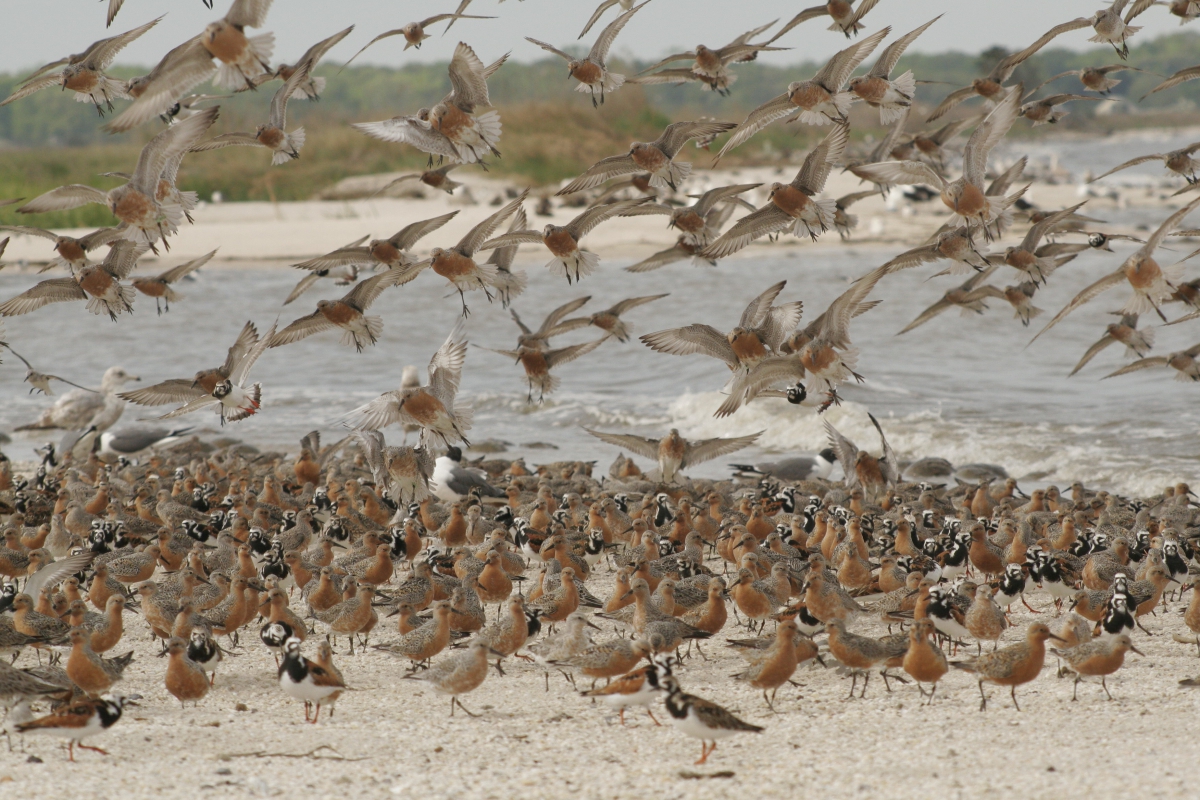
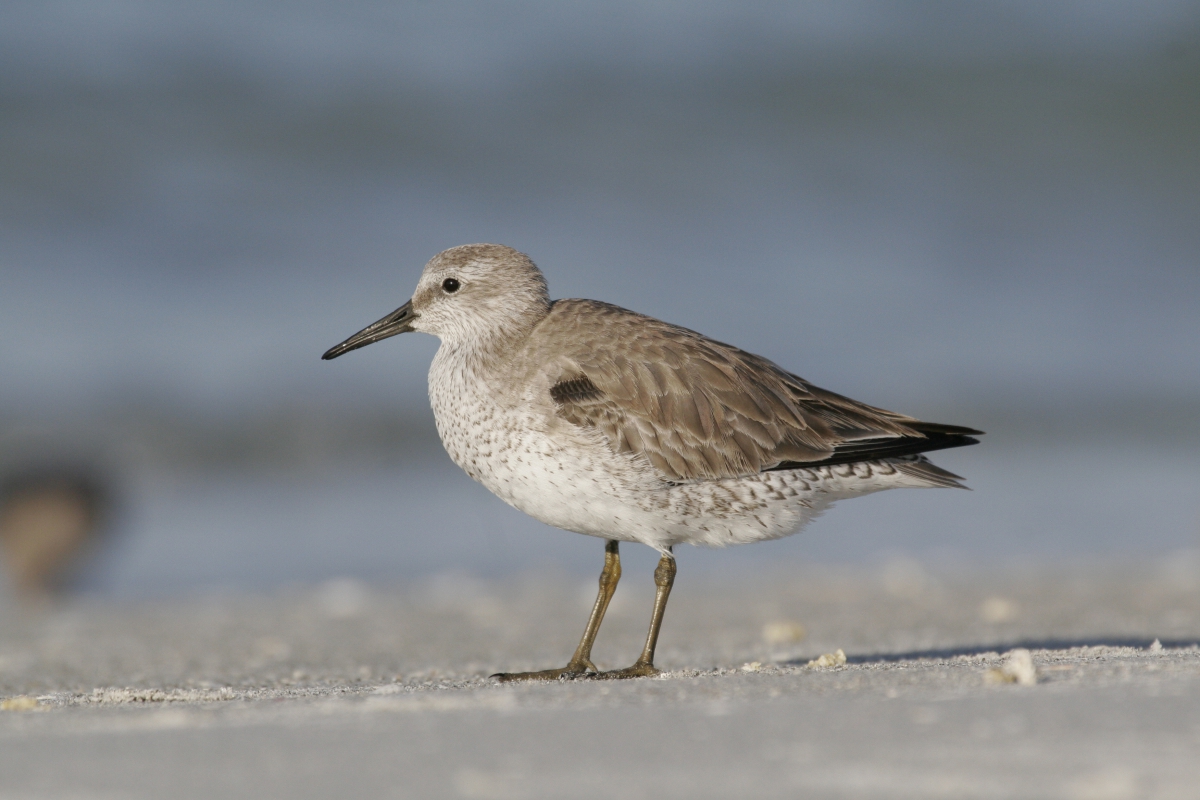
During the winter you are a robin-sized grey and white shorebird often seen feeding along the seashore in places like Florida, Brazil and Argentina.
In March, you begin to moult your feathers into a beautiful red breeding plumage.
Each spring you fly from southern Argentina to your breeding grounds in the Canadian Arctic.
When you have finished raising your family you fly back down to southern Argentina to spend the winter. The round trip is more than 30,000 kms.
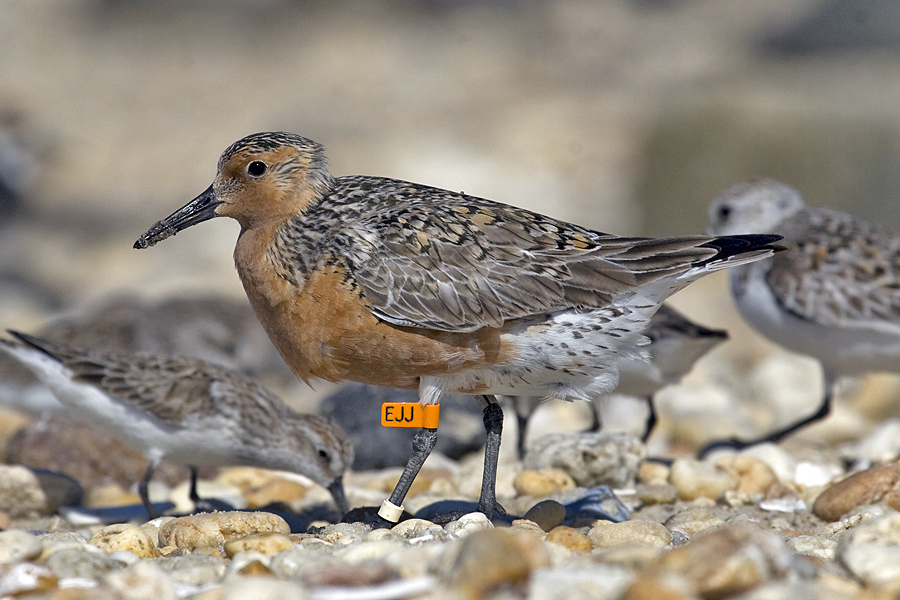
Some of the birds are now "wearing different coloured flags" with a special code provided to them by scientists. The orange flag means you were first caught in Argentina.
By looking up the combination EJJ, we know that you were flagged in December of 2006 in Rio Grande, Argentina.
Since that time you have been seen many times during your spring migration on the east coast of the United States. Sadly, you were not seen again in 2012.
Hopefully, you will be seen again this spring!
Look at the map below to see your migration route and other sites where you have been seen.
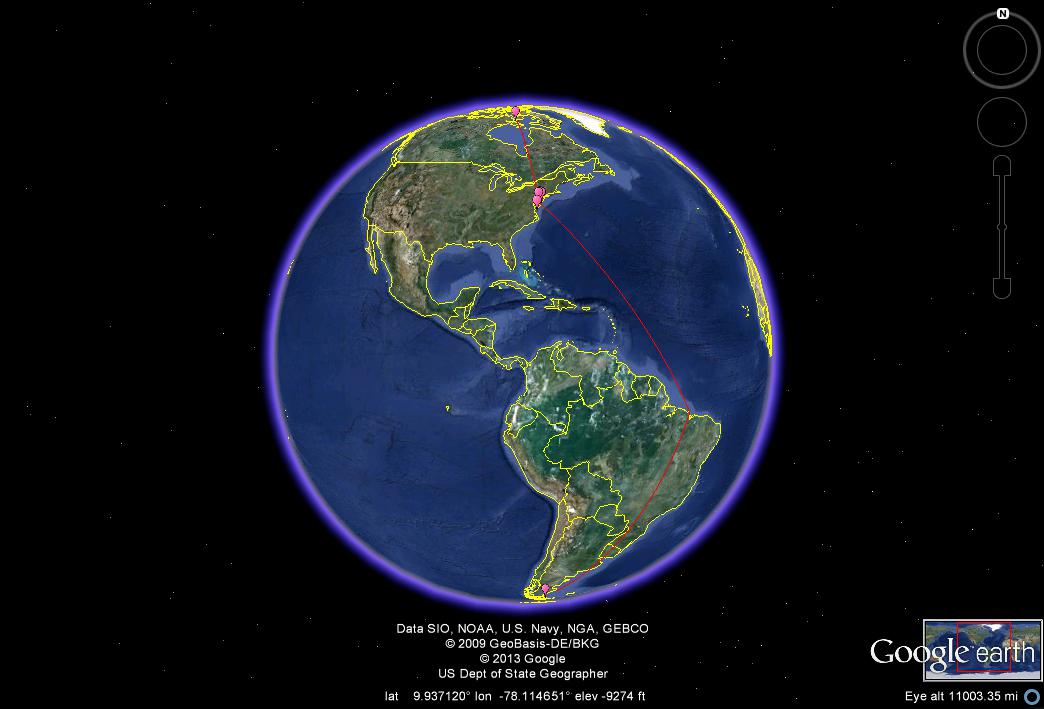
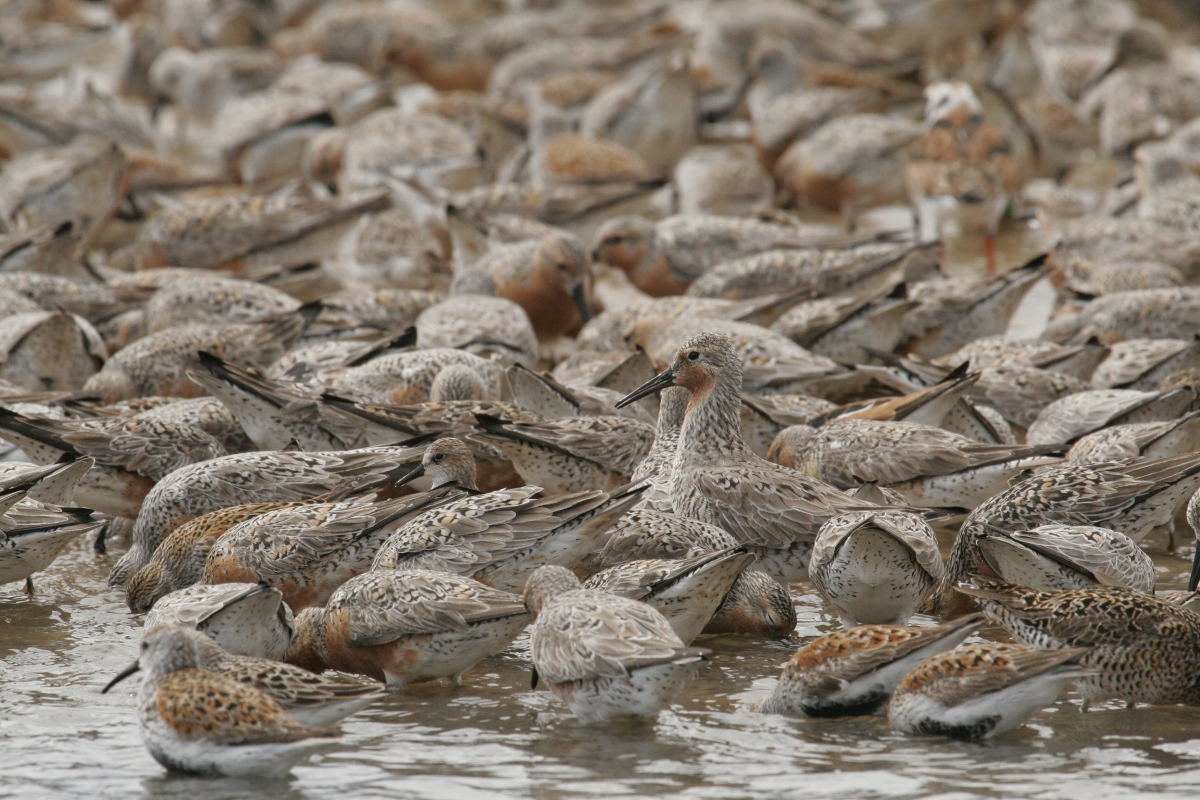
During your two month migration you will need to stop with your friends at a few food rich sites to eat more and get fat.
The spring feast of Horseshoe Crab eggs in the Delaware Bays is one of the best places.
In a good year you will double your weight in two weeks before making the final flight up to the arctic at the end of May.
Without the extra fat you could never fly to the arctic to lay your eggs and raise your young.
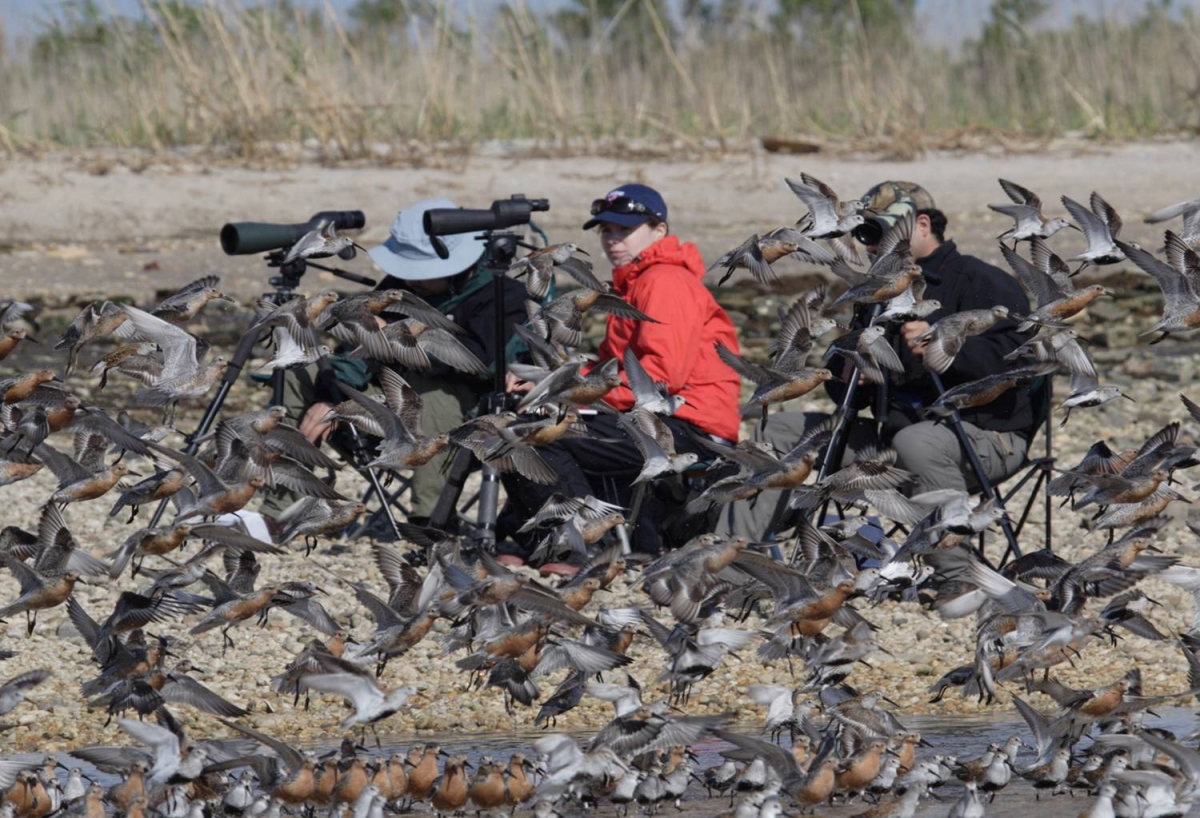
This is when researchers can look for colour combinations to see how you are doing.
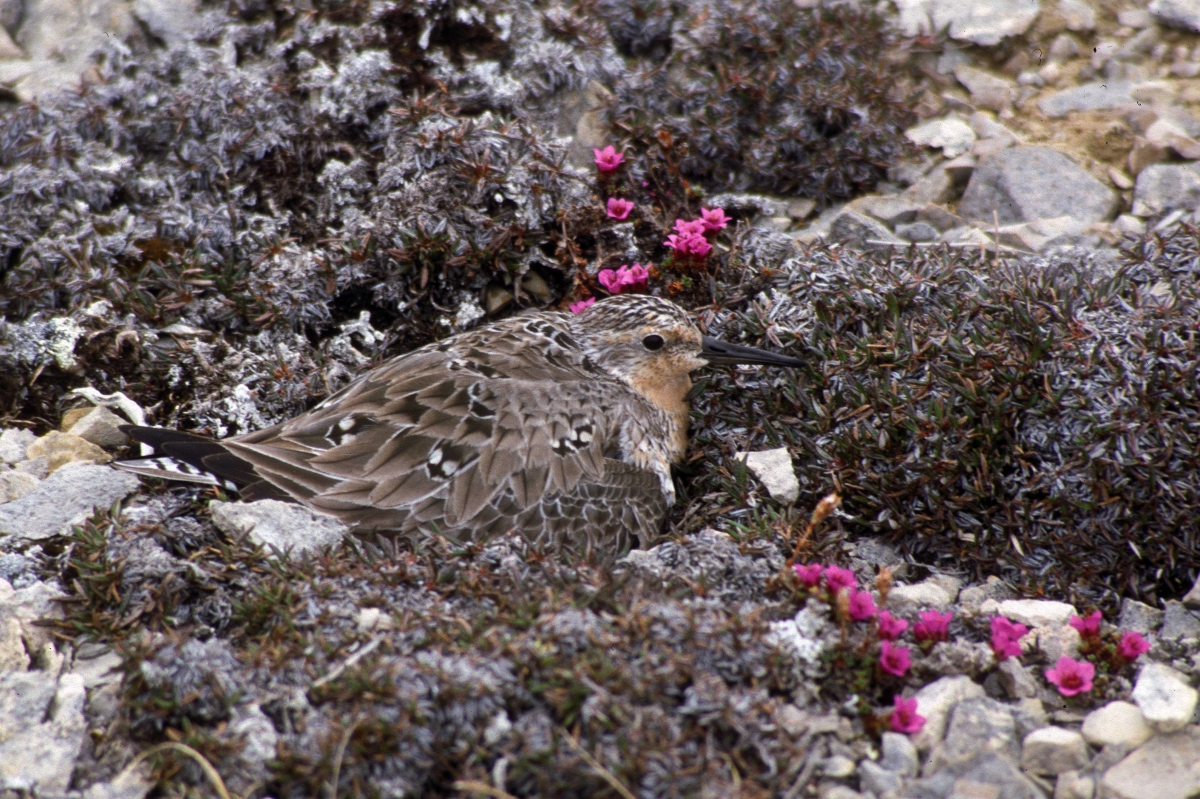
Another successful migration. You have built a nest and are now sitting on your eggs waiting for them to hatch in 24 days.
As long as the weather is not too unpredictable and you are not discovered by a predator, you should be heading back south in early August, leaving your four offspring to make their migration south by themselves!
Special thanks to the Shorebird Banding and Resight Data Management website.
